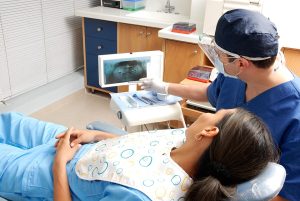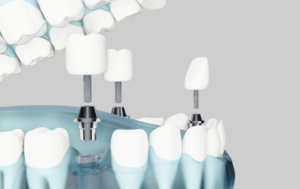Canada is currently ranked the number one country in the world according to the U.S. News & World Report. That is the first time this northern territory has ranked so high, and it has to do with the balance of work, life, family, and enjoyment. Canadian living is relaxed, where the majority of the country is laid back and friendly.
More importantly to all our international dental readers, Canada is currently experiencing a high demand for new dentists. Population growth, an aging citizenry, labor shortages and technological advancement in diagnosis and treatment are drastically increasing the need for new dentists to enter the marketplace. So much so that the current outlook is expected to grow at a higher than normal rate for the foreseeable future.
This is an excellent opportunity for internationals wishing to learn how to immigrate to Canada as a dentist.
Table of Contents
Advantages of Moving to Canada as a Dentist
Besides the wonderful job offers available, when you immigrate to Canada, you get access to some of the best wages available. The expected salary for an average full time dentist is between $120,000 and $240,000 CAD annually.
Imagine moving from a country that pays 20-40% less than what you could be earning in Canada. Not only that, but you will get excellent free healthcare through the national system (universal health coverage). In many cases, private healthcare is also included as a sign-on benefit which has dental coverage for specific private providers.
Yes, the income potential is high, but you also get to live in one of the most naturally beautiful destinations in the world and most livable cities. Canada is a rich, resource-heavy country that is dotted with cosmopolitan cities with varying cultures and historical centers.
You also get:
♦ A chance at Canadian Permanent Residency
♦ One of the most beneficial passports in the world upon full citizenship
♦ Access to internationally renowned universities
♦ Access social benefits
♦ Apply for Citizenship and Dual Nationality after four years
♦ Enjoy protection under Canadian law and the Canadian Charter of Rights and Freedoms
Canada Express Entry System Openings
Express Entry system is the quickest way to immigrate to Canada as a dentist. This cuts down the entire Canadian Immigration process from years to only a few months. The point is to drive more skilled professional worker immigration to a nation with a growing population. Being a dentist is a highly qualified occupation for Express Entry through the Federal Skilled Worker program (FSWP).
The Canadian government was kind enough to create the National Occupation Classification Codes that designate particular occupations currently high in demand. This includes dentist noc code under the NOC Code 3113, which covers:
This is a competitive immigration system that ranks all eligible candidates against each other based on age, education, language ability, work experience, and other factors.
♦ dental surgeon
♦ qualified dentist
♦ doctor of dental surgery
♦ endodontist
♦ general practicing dentist
♦ implantology dentistry
♦ the dental and oral surgeon
♦ the maxillofacial and oral surgeon
♦ medicine oral specialist
♦ oral pathologist
♦ maxillofacial surgery and oral pathology specialist
♦ oral radiologist
♦ orthodontist
♦ pediatric dentist
♦ Pedodontist
♦ periodontist
♦ prosthodontist
♦ public health dentist
♦ stomatologist
It is important to note that some occupations in the dental field are excluded. These include:
♦ Dental assistants
♦ Dental Hygienists and dental therapists
♦ Dental technologists, dental technicians, and laboratory assistants
♦ Denturists
Overall, you will want to take advantage of this federal skilled worker program because it grants you express entry into one of the best places to live and work as a licensed dentist.

Take Advantage of the Provincial Nomination Program
Another way to immigrate to Canada as a dentist is to engage in the PNP (Provincial Nomination Program). These are unique criteria set by each of the 11 provinces in Canada that allow for a certain number of skilled workers to be nominated by the specific area for inclusion. Provincial nomination can lead to permanent residency if you find private employers that are willing to sponsor you.
If you work with a school or program that helps you get into Canada as a dentist, you will probably learn a great deal about the Provincial Nomination (PNP) because these organizations have direct ties to the government. They know how many dental jobs openings are available in each province and can help you to get set up.

The 11 provinces in Canada are:
♦ Alberta
♦ British Columbia
♦ Manitoba
♦ New Brunswick
♦ Newfoundland and Labrador
♦ Northwest Territories
♦ Nova Scotia
♦ Ontario
♦ Prince Edward Island
♦ Saskatchewan
♦ Yukon
The Canadian Immigration Application Process
We will now go over the complete process of immigrating to Canada as a dentist. Keep in mind that things may change periodically as the government issues new rules and regulations to the Canadian immigration policy depending on the number of people taking advantage of the different available programs.
Also, Check Out
♦ How to Become a Dentist in Canada (A Step by Step Guide)
♦ How to Prepare for TOEFL Test in Canada
Step 1 – Determine Your Eligibility
Before you can figure out how to immigrate to Canada as a dentist, you need to make sure you meet the minimum qualifications required. There are over 80 different visa pathways to Canada, so odds are you probably meet at least one of them.
Every entry program will have its own minimum qualifications. For dentists using the Express Entry program, you must:
♦ Have at least one year of continuous full-time work experience in a skilled occupation (over the previous 10 years).
♦ Be able to meet the demands of the Canadian Language Benchmark language proficiency in either English or French.
♦ Hold a post-secondary degree that meets the Canadian standards of an Education Credential Assessment.
Essentially are you a qualified dentist in your home country that has worked full-time for at least a year and can speak English or French conversationally? If you can do that, you qualify.
Step 2 – Get Your Qualifications Accredited
To get your accreditation, you need to show evidence that your dental degree translates over to Canada. The easiest way to do this is through the ECA (Educational Credential Assessment) program. They will verify that your information is correct from a recognized dental program, in a recognized institution.
The most common way this is done is during your Visa application. You can fill out a section that includes your educational studies and grants you points based on the level of study you have completed.
You will have to supply a decent amount of documentation for this step, so hiring an experienced immigration professional may be a wise decision.
Step 3 – Apply to the Dental Regulatory Authority (DRA)
You can do this by visiting the homepage of the province you wish to live within. They will direct you to the DRA for that provincial government (territorial regulatory body). If you elect to use a different migration process, then this is where you start those programs. That includes:
♦ Express Entry
♦ PNP (Provincial Nominee Program)
♦ Rural and Northern Immigration Pilot – this requires a valid job offer from an RNIP participant
♦ Atlantic Immigration Pilot – sending skilled workers to the 4 Atlantic provinces with a formal job offer of at least 1 year
Step 4 – Either Take an NDEB Equivalency Process or Complete an Accredited Qualifying/Degree Completion Program
The most common step here for internationally trained dentists is to complete the National Dental Examining Board (NDEB) series of admittance exams. You can find many different organizations that will help you prepare to sit these tests if it has been a while since you last reviewed the information.
We strongly encourage you to work with dental review centers that teach you everything you need to know for these exams. They provide you access to the critical information needed to practice in Canada as a dentist, as well as connect you with many of the networks and job opportunities in their local area.
If you do not wish to take the exam but would rather finish a degree completion program (university degree), you can work with these same institutions or apply to any of the high-quality schools and universities available in Canada. You may be eligible for a student visa while completing your education which is another foot in the doorway to immigrate to Canada as a dentist.
Step 5 – Complete all Paperwork and Applications
This is what we will refer to as the “fuzzy part.” To put it bluntly, this paperwork requires a spate degree on its own. There is a lot of bureaucracy in the Canadian government that requires exact documentation and details in order to verify all parts of your application process. We highly suggest working with an immigration attorney or one of the dental organizations listed in our other blog posts to complete this step.
Step 6 – Practice!
With everything else completed, a certification in your pocket, and a dental work offer on the horizon. You are now ready to practice dentistry in Canada. The last thing you will need to do is make your way to Canada and activate your visa.

Getting Connected with an Immigration Consultant
When you are deciding how to immigrate to Canada as a dentist, you should engage the services of an immigration consultant. These are known as RCICs (Regulated Canadian Immigration Consultants) and have been given the designation as experts in their fields.
Hiring an RCIC practically guarantees that you will successfully navigate the ever-changing immigration policies, laws, and visa opportunities currently being offered to your profession.

FAQs
Can you immigrate to Canada as a dentist?
Yes! Not only are you capable of immigrating as a human being, but a dental background has high demand and opens more opportunities than others.
What about if I am from India?
There is a vibrant Canadian-Indian community throughout the country. You will find a lot of support when moving to Canada as an Indian dentist.
Can I bring my family with me as I immigrate to Canada?
Yes, as a visa holder, you are able to pass on your immigration to your spouse and children automatically. If your partner has advanced skills or education, you actually benefit by moving as a family.
Will I be selected to immigrate to Canada as a dentist?
The Express Entry candidate pool is highly competitive. It involves CRS (Comprehensive Ranking System) points to determine your rank inside the pool. Getting a job offer, having a solid educational background, proving working experience, and more increases your chance of being selected in the PNP program or express entry.
Do I have to have a job offer in order to immigrate to Canada as a dentist?
There are three main ways to immigrate to Canada as a dentist:
♦ Using Express Entry
♦ With a valid job offer or arranged employment from a Canadian based employer
♦ Under the PNP or RPNP programs
How much money do I need to have?
This will vary wildly on your own personal circumstance. We can tell you that the cost for the Express Entry program will be roughly $2,300 CAD for an individual and $4,500 CAD for a couple. This does not include settlement funds which start at $13,000 CAD for an individual. That is the amount of money the government wants to see you have available after moving.
Why is it so easy to immigrate to Canada and not the US?
Canadian cities depend on the immigration population. Unlike the US, Canada embraces its immigrants to bolster the labor market. This is also why Canada has one of the most reliable currencies in the world.

Are there age requirements?
This is another “fuzzy area” of immigration. The best ages are going to be between 25-35 because those are viewed as having a lot of work years ahead of them where people are contributing to the overall economy. However, there are no age limits on immigration as Canada recognizes the value in older immigrants because of their experience and skills.
Wrapping it Up
Learning how to immigrate to Canada as a dentist is a long and complex process. There are a lot of steps you need to follow and comprehensive paperwork that must be verified and filled out with a high level of accuracy.
We strongly encourage you to follow up with an RCIC for the complete details, but we hope this guide has offered the basic overview so you can get the ball rolling.
As always, be sure to check out the rest of our site for more information. We are the leading source of info for ITDs looking to build a new life in one of the most beautiful countries in the world.

Karen Nunez is a practicing dental health care professional in Alberta, Canada. She’s passionate about educating her readers on achieving optimum dental health through extensive research on the latest dental topics and providing science-backed product recommendations. Her mission to help Internationally -trained dentists integrate in Canada makes her a difference maker in her field.
In her free time, you can find her glued to her favorite Paulo Coelho books and concocting the best chocolate cupcakes her loved ones go crazy about.

